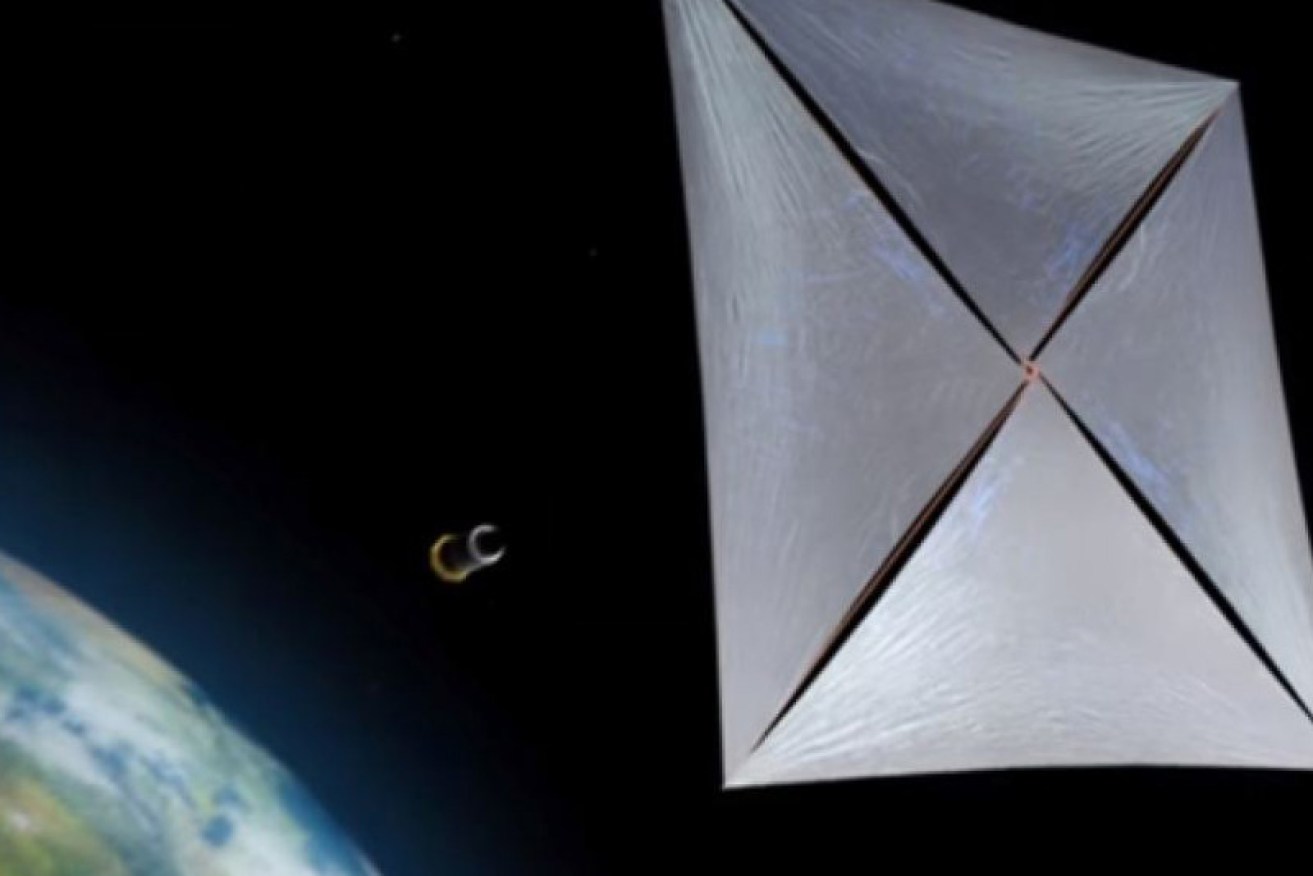Hawking, Zuckerberg launch into deep space

ABC
Tiny spacecraft could reach another solar system within a generation as part of a groundbreaking, $130 million project.
The capsules, about the size of a mobile phone, would need to travel trillions of kilometres, which under existing technology would take 30,000 years.
But British scientists said the tiny new craft, travelling at a fifth of the speed of light, could in theory reach a nearby star in just 30 years.
• Facebook cracks down on sneaky branded content
• Netflix passwords stolen, sold on black market
•You should ask Telstra for more: expert
Billionaire internet investor Yuri Milner is backing the new project called Breakthrough Starshot, and if successful, scientists could determine if Alpha Centauri — a star system about 40 trillion kilometres away — contained an Earth-like planet capable of sustaining life.
Cosmologist Stephen Hawking is one of the members on the project’s board with Mr Milner, as well as Facebook chief executive Mark Zuckerberg.
“I believe what makes us unique is transcending our limits,” Professor Hawking said.
“Earth is a wonderful place, but it might not last forever.
“Sooner or later, we must look to the stars — Breakthrough Starshot is a very exciting first step on that journey.”
Project builds on search for alien life
The new project comes less than a year after the announcement of Breakthrough Listen, a decade-long, $135-million project also backed by Mr Milner, which monitors radio signals for signs of intelligent life across the universe.
Breakthrough Starshot involves deploying small, light-propelled vehicles to carry equipment like cameras and communication equipment.
Scientists hope the vehicles, known as nanocraft, would eventually fly at 20 per cent of the speed of light, more than 1,000 times faster than today’s spacecraft.
Pete Worden, the former director of NASA’s Ames Research Centre, leads the project.
“The thing would look like the chip from your cell phone with this very thin gauzy light sail … [that] would be something like [3.5 metres] across,” Dr Worden said.
Dr Worden envisions sending a larger, conventional spacecraft containing thousands of nanocraft into orbit and then launching the nanocraft one by one.
‘Major engineering problems to solve’
However, the project could take years to develop, with no guarantee it would work.
Mr Milner is funding the project with $130 million from his own pocket, which could cost as much as $13 billion before it is fully realised.
“The Breakthrough StarChip concept is based on technology either already available or likely to be available in the near future,” Mr Milner said.
“But as with any moonshot, there are major engineering problems to solve.”
A project two years ago by Cornell University called KickSat fizzled after the craft carrying 104 micro-satellites into space failed to release them.
The plan had been to let the tiny satellites orbit and collect data for a few weeks.
Dr Worden also acknowledged the challenges ahead, including the nanocraft surviving impact on launch.
They would have to endure 20 years of travel through the punishing environment of interstellar space, with obstacles such as dust collisions.
“The problems remaining to be solved — any one of them are showstoppers,” Dr Worden said.
“We take inspiration from Vostok, Voyager, Apollo and the other great missions.”
If the nanocraft reached the star system and succeeded in taking photographs, it would take about another four years to transmit them back to Earth.
Watch the video about the project below.
– with wires








